Home > Directory Home > Drawing Lessons >Pencils Drawing > Art Materials Needed
pencil drawing techniques : Art Materials & Supplies Needed
|
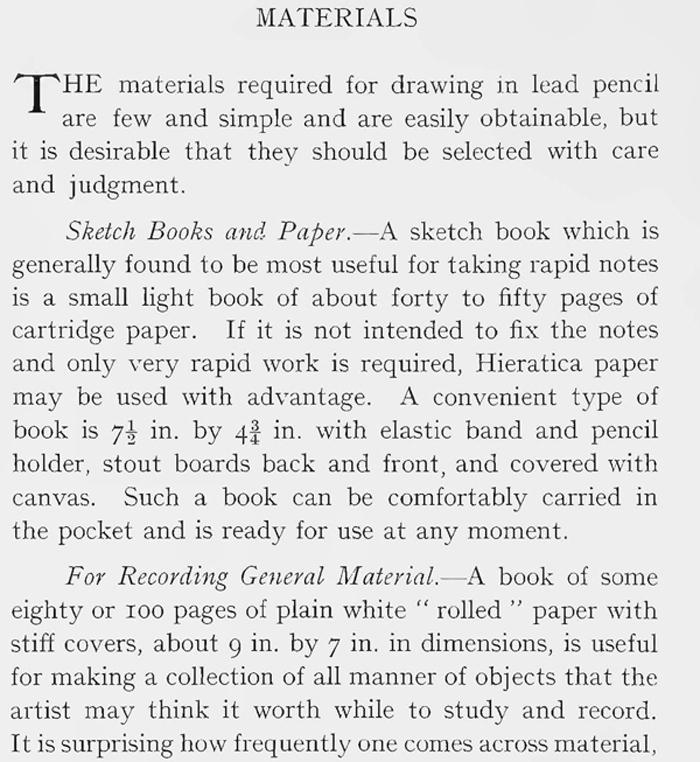

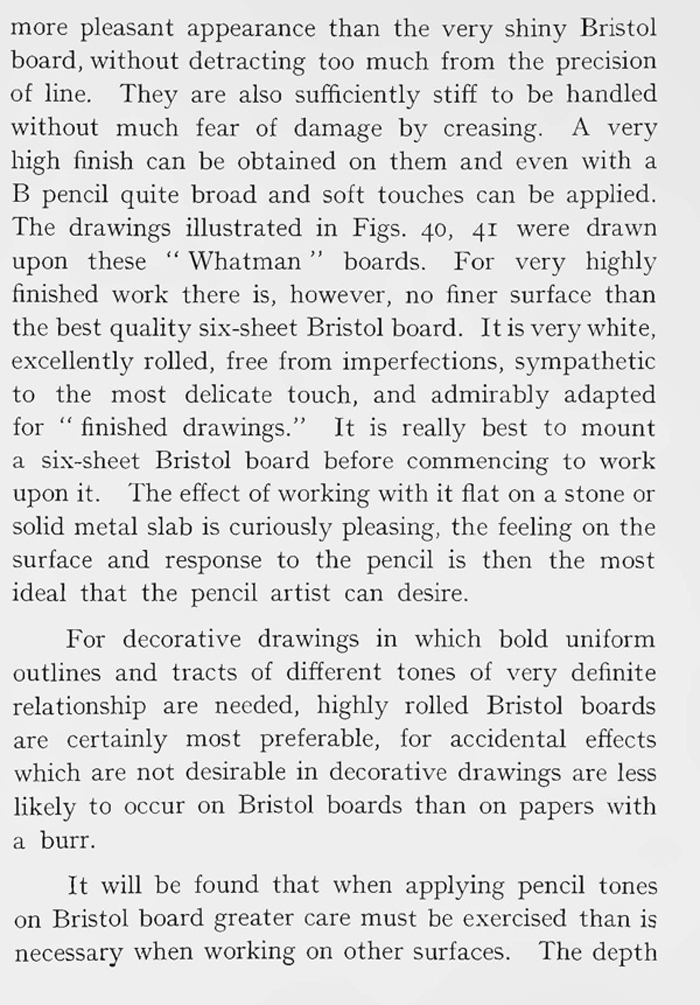
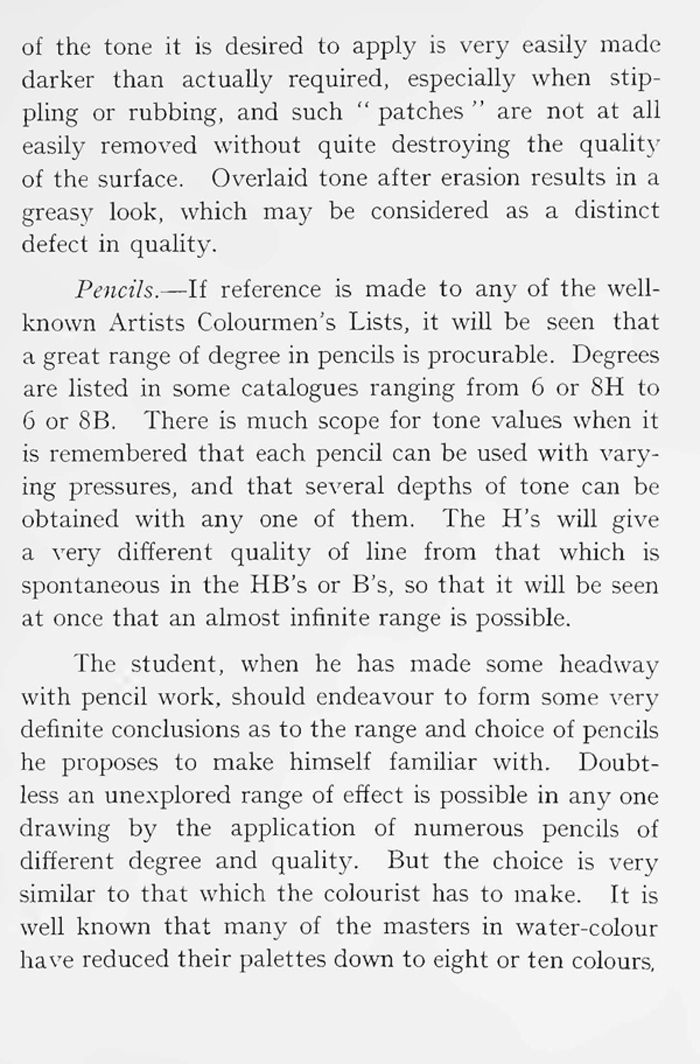
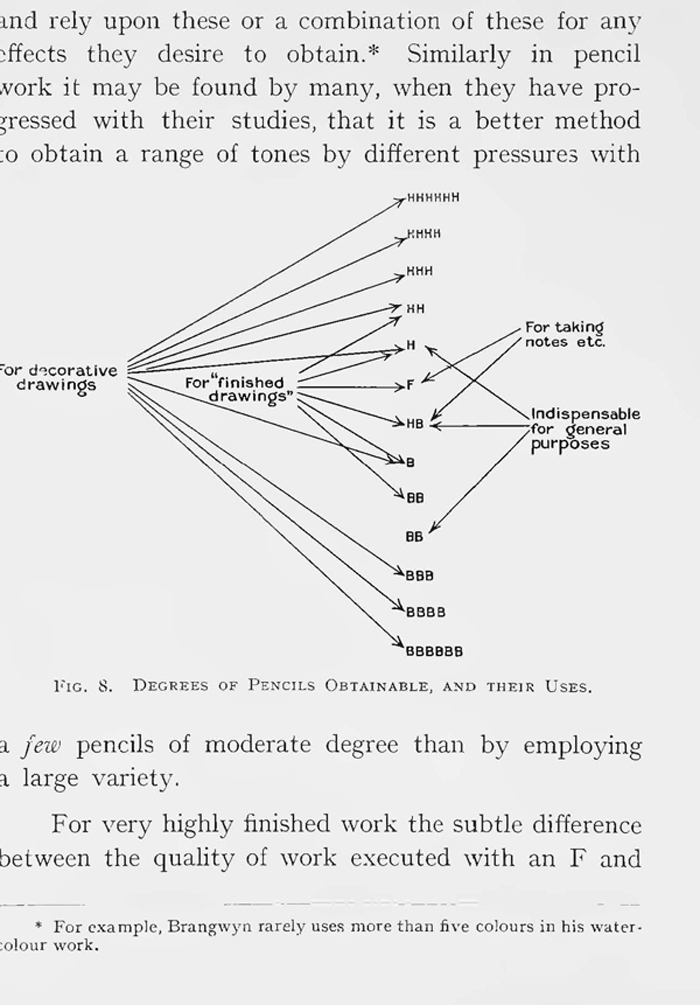
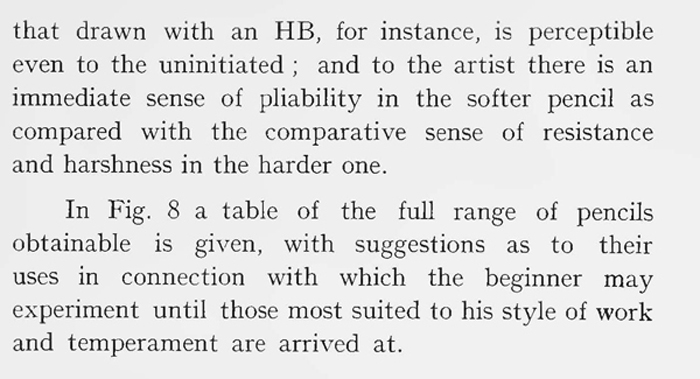
GO BACK TO THE HOME PAGE FOR PENCIL DRAWING TUTORIALS
[The above words are pictures of text, below is the actual text if you need to copy a paragraph or two]
ART MATERIALS & SUPPLIES NEEDED FOR PENCIL DRAWING
The materials required for drawing in lead pencil are few and simple and are easily obtainable, but it is desirable that they should be selected with care and judgment.
Sketch Books and Paper.—A sketch book which is generally found to be most useful for taking rapid notes is a small light book of about forty to fifty pages of cartridge paper. If it is not intended to fix the notes and only very rapid work is required, Hieratica paper may be used with advantage. A convenient type of book is 7 in. by 41 in. with elastic band and pencil holder, stout boards back and front, and covered with canvas. Such a book can be comfortably carried in the pocket and is ready for use at any moment.
For Recording General Material.—A book of some eighty or Too pages of plain white " rolled " paper with stiff covers, about 9 in. by 7 in. in dimensions, is useful for making a collection of all manner of objects that the artist may think it worth while to study and record. It is surprising how frequently one comes across material, considered unlikely at the time, which, if recorded, is found almost invaluable at a later date.
For taking these rapid notes an F or HB pencil will be found the most suitable.
Block for Experimental Sketches. — For "experimental sketches" a block of rough paper is best. A sketch can be more rapidly worked up on rough paper than on cartridge or " hot-pressed " paper. The sketch Fig. 42 was drawn on a small block of Whatman's watercolour paper. As " general effect " and tone values are needed most at this stage, the roughness of the paper will give some suggestion of the meticulous technique without involving quite so much labour as would be required to actually produce it on a smooth paper. An HB pencil is most useful for this purpose, giving a sufficient range of tone for experimental work.
Papers and Boards for Finished Drawings.—For small or moderate sized finished drawings Bristol board is an exceedingly good all-round material, but it will undoubtedly be found that for general use and especially for larger drawings Whatman's watercolour sketching boards with hot-pressed surface give an artistic effect. These are to be obtained in many useful sizes. The surface of these " Whatman " boards is not so highly rolled as is the case with Bristol board, and is therefore not so delicate. There is, in fact, a very slight burr upon the former which gives the paper a more pleasant appearance than the very shiny Bristol board, without detracting too much from the precision of line. They are also sufficiently stiff to be handled without much fear of damage by creasing. A very high finish can be obtained on them and even with a B pencil quite broad and soft touches can be applied. The drawings illustrated in Figs. 40, 41 were drawn upon these " Whatman " boards. For very highly finished work there is, however, no finer surface than the best quality six-sheet Bristol board. It is very white, excellently rolled, free from imperfections, sympathetic to the most delicate touch, and admirably adapted for " finished drawings." It is really best to mount a six-sheet Bristol board before commencing to work upon it. The effect of working with it flat on a stone or solid metal slab is curiously pleasing, the feeling on the surface and response to the pencil is then the most ideal that the pencil artist can desire.
For decorative drawings in which bold uniform outlines and tracts of different tones of very definite relationship are needed, highly rolled Bristol boards are certainly most preferable, for accidental effects which are not desirable in decorative drawings are less likely to occur on Bristol boards than on papers with a burr.
It will be found that when applying pencil tones on Bristol board greater care must be exercised than is necessary when working on other surfaces. The depth of the tone it is desired to apply is very easily made darker than actually required, especially when stippling or rubbing, and such " patches " are not at all easily removed without quite destroying the quality of the surface. Overlaid tone after erasion results in a greasy look, which may be considered as a distinct defect in quality.
Pencils. — If reference is made to any of the well-known Artists Colourmen's Lists, it will be seen that a great range of degree in pencils is procurable. Degrees are listed in some catalogues ranging from 6 or 8H to 6 or 8B. There is much scope for tone values when it is remembered that each pencil can be used with varying pressures, and that several depths of tone can be obtained with any one of them. The H's will give a very different quality of line from that which is spontaneous in the HB's or B's, so that it will be seen at once that an almost infinite range is possible.
The student, when he has made some headway with pencil work, should endeavour to form some very definite conclusions as to the range and choice of pencils he proposes to make himself familiar with. Doubtless an unexplored range of effect is possible in any one drawing by the application of numerous pencils of different degree and quality. But the choice is very similar to that which the colourist has to make. It is well known that many of the masters in water-colour have reduced their palettes down to eight or ten colours, and rely upon these or a combination of these for any effects they desire to obtain.* Similarly in pencil work it may be found by many, when they have progressed with their studies, that it is a better method to obtain a range of tones by different pressures with a few pencils of moderate degree than by employing a large variety.
For very highly finished work the subtle difference between the quality of work executed with an F and Draw Caricatures : Learn how to draw caricatures...For example, Brangwyn rarely uses more than five colours in his watercolour work.
For taking notes etc.
For decorative
drawings
Indispensable for general purposes
FIG. S. DEGREES OF PENCILS OBTAINABLE, AND THEIR USES.
that drawn with an HB, for instance, is perceptible even to the uninitiated ; and to the artist there is an immediate sense of pliability in the softer pencil as compared with the comparative sense of resistance and harshness in the harder one.
In Fig. 8 a table of the full range of pencils obtainable is given, with suggestions as to their uses in connection with which the beginner may experiment until those most suited to his style of work and temperament are arrived at.




